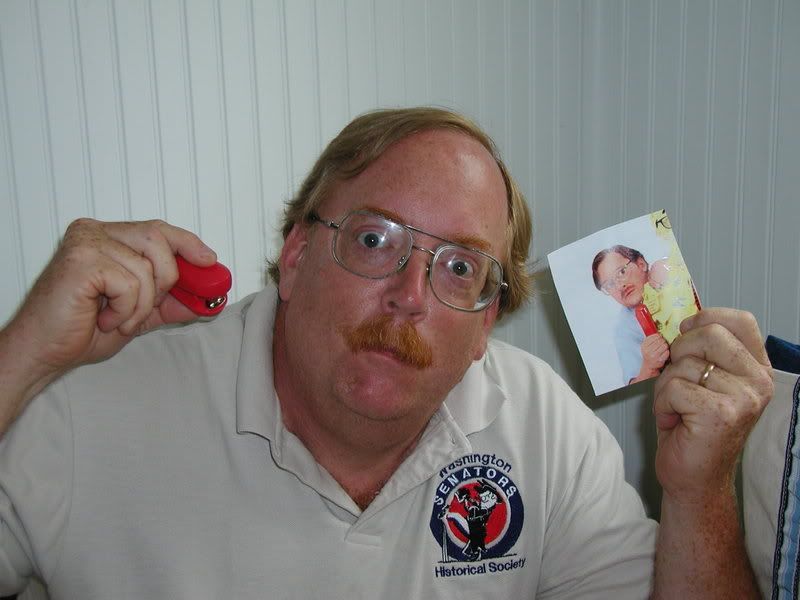Yesterday, the first of July, I pulled the hive top feeders off of both hives for the purpose of cleaning them. The bees had drained the syrup a couple of days before and the feeders had become pretty funky in the weeks since I had put them back on. The "ant" feeder on Georgia was particularly nasty with lots of crusted ants who apparently just didn't have the capacity to know when to stop drinking. Once they are presentable again, I'll open the buffet with more syrup for the little beasts.
After removing the feeders - and yes, I smoked them - I noticed they had also finished off any trace of the pollen patties I'd placed on the top of the frames. As an aside, I was treated to the sight of a bee hauling out a piece of wax paper from the previous patty and tossing it in the grass a few days back. The piece of paper was at least four or five times bigger than she was. It must have been fun for her to drag that down through two brood boxes full of bees!
I then went through all four supers to see how comb production was going, starting with the Georgians. In their case, all twenty frames were completely drawn out and full of nectar. I'd say about 20% contained capped honey and I was surprised to see little knots of capped drone brood in the lower super, closest to the top brood box. There were perhaps 20-30 capped cells in all - all drone, no worker cells. Have no idea if this is normal. Another feature that I could have done without was the enormous amount of propolizing they had done to seal those frames in. The top super, which was the first they had drawn out, was really glued up. I spent some extra time scraping propolis and ladder comb just to help make things a little easier next time (I hope!) Their report card for this session is an 'A' though. In fact, I need to get hot putting together another super for them to work on.
The Arlington girls, too, had made great strides. In fact, I'd say they had about 30% of their honey capped in their first super. Unfortunately, the second super still had two frames that needed work and one that had barely been touched. I moved all of these to the middle of the box so they could focus their attention on them better. There was no brood in their supers at all and considerably less propolizing...Yay! When finished inspecting, I gave a large chunk of pollen patty to each hive and they went right to it, forgetting all about me. Maybe instead of smoke you could just toss a pollen patty into the hive like a grenade before entering. I'll have to look into a volunteer for that experiment.
There is one thing that I have been remiss to do up to this point. I need to begin focusing on what kind of mite situation I have going in the hives. The Varroa and tracheal mites can surely kill off both hives if left to nature and so I have to ascertain what level of infestation the bees might be dealing with and then work on a treatment program. And so, my next activity will be to do the "sticky board" check, which is to say I'll place a board under the screen at the bottom of the hive that has been sprayed with PAM or vegetable oil and leave it for 24 hours. Mites will fall off the bees onto the board and I can then count them to get some idea of their numbers in the hive. The whole mite control thing represents, for me, the next level in beekeeping and my success at it will determine the survival of the hives. More on that next time.
When it comes to observing the bees, my habit has been to stand beside the hive, rest my arm on the top cover and peer down on the landing board from above. They generally ignore me and go about their business as if I wasn't there. Even when they are engaged in "playtime" and the air in front of the hive is full of bees, I can stand as I've described and not be bothered by them. As always though, once a comfort level is achieved, something changes the equation and it is never to the beekeepers benefit, it seems. The hive top feeders I have are made of plastic and have a bottom flange that overhangs the hive box on all four sides. The feeder on the Arlington hive had become splayed out along the long edge enough that it had created an opening for the bees to enter the top of the hive. I was unaware of this fact one day as I assumed my normal position beside their hive. While happily watching the activity at the front entrance, a bee from the new upper entrance took an interest in my armpit that was so enticingly close. Naturally, I was made aware of this only when I tired of watching the bees and lowered my arm onto her. She responded in the only way she knew how and so, our tally grew by one and my left armpit endured a zap for probably the 5th or 6th time. Maybe it's time I changed brands of deodorant.
Sting count...an unlucky 13.
Subscribe to:
Post Comments (Atom)

No comments:
Post a Comment